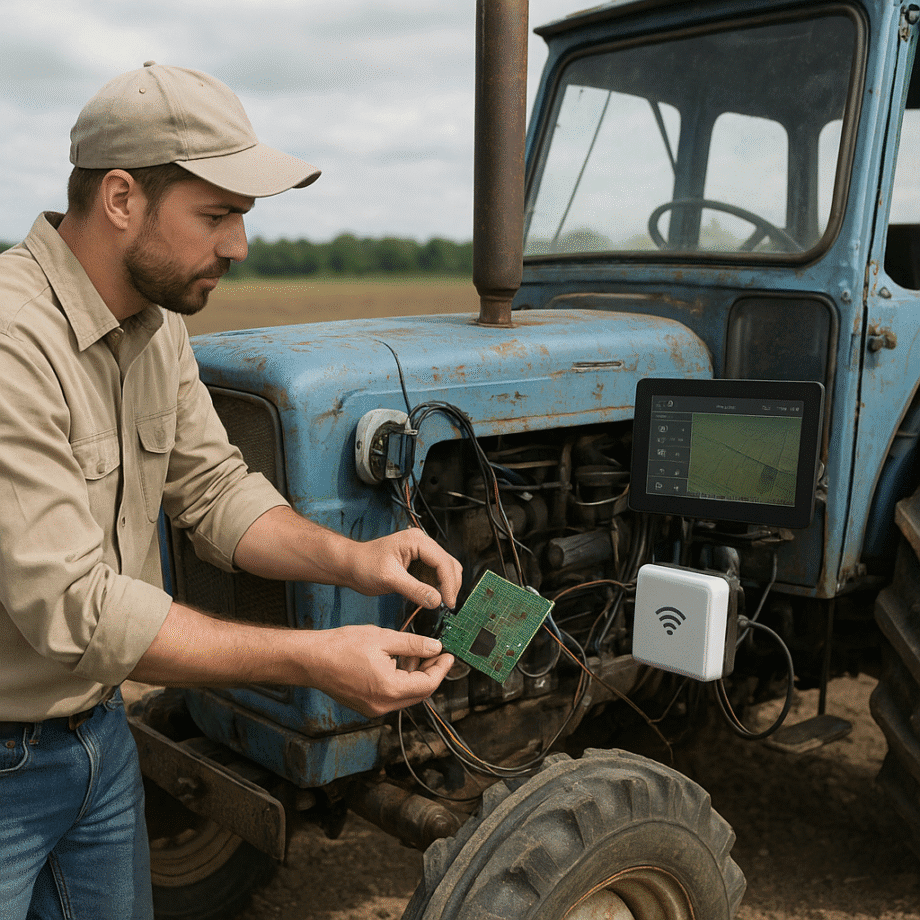The drive toward modernization has put agricultural machinery at the forefront of a technological revolution. By retrofitting existing equipment farmers can achieve automation, improve efficiency, and unlock data-driven insights without replacing entire fleets. This guide explores practical strategies for upgrading old tractors, harvesters, and irrigation systems to meet the demands of smart farming.
Integrating Sensors and Connectivity
Upgrading legacy machines often begins with the installation of advanced sensors and network modules. These devices transform mechanical equipment into intelligent platforms that collect and transmit critical information in real time.
Choosing the Right Sensors
- Soil moisture sensors: monitor water levels and prevent over-irrigation.
- Temperature and humidity sensors: detect microclimatic changes around crops.
- GPS modules: enable precise positioning for field mapping and navigation.
- Vibration sensors: track mechanical wear to support predictive maintenance.
Once installed, these components rely on robust connectivity solutions—such as cellular, LoRaWAN, or satellite links—to deliver continuous streams of data from the field to the cloud. This network backbone ensures that insights remain uninterrupted, even in remote areas.
Implementing Automation and Control Systems
Automation transforms ordinary tractors into smart vehicles capable of self-steering, variable-rate seeding, and task scheduling. By integrating control units and actuators, farmers reduce manual labor and achieve consistent results.
Key Components for Automation
- Electronic control units (ECUs): coordinate machine functions based on sensor inputs.
- Hydraulic actuators: adjust planting depth and seeding rates dynamically.
- Auto-guidance kits: use GNSS data for centimeter-level precision in row alignment.
- Human-machine interfaces (HMIs): provide intuitive dashboards for monitoring operations.
Through modular retrofitting, these automation kits can be adapted to a variety of makes and models. The result is a farm where equipment operates with minimal supervision, reducing operator fatigue and optimizing field coverage.
Leveraging Data Analytics for Precision Farming
With connectivity and automation in place, the next step focuses on harnessing collected information. Advanced analytics platforms compile sensor readings, operational logs, and environmental data into actionable recommendations.
From Raw Data to Smart Decisions
- Field mapping: generate high-resolution soil and crop maps to guide planting patterns.
- Yield monitoring: correlate harvest output with soil conditions and machine settings.
- Resource allocation: determine optimal fertiliser and pesticide distribution zones.
- Performance benchmarking: compare equipment efficiency across seasons.
By applying machine learning algorithms, farmers can forecast potential issues—like disease outbreaks or equipment failures—and take preventive measures. This precision approach maximizes yields while minimizing input waste.
Ensuring Sustainability and Scalability
Establishing a future-proof smart farm requires attention to both environmental and economic factors. Sustainable upgrades reduce fuel consumption, limit soil compaction, and extend the life of existing machinery.
Strategies for Sustainable Operation
- Variable-rate technology: apply water, fertiliser, and pesticides only where needed.
- Electric and hybrid powertrains: lower greenhouse gas emissions and operating costs.
- Solar-assisted charging: power sensors and control units with renewable energy.
- Modular designs: simplify maintenance and allow gradual expansion of smart features.
Scalability hinges on interoperability standards such as ISOBUS and MQTT, which ensure that newly added components communicate seamlessly with existing systems. This open architecture fosters continuous improvement and protects investments in both hardware and software.
Overcoming Common Challenges
Transitioning to smart farming is not without obstacles. Farmers often face budget constraints, technical complexity, and training needs.
- Cost management: prioritize upgrades based on return-on-investment analysis.
- Technical support: partner with service providers that offer installation and troubleshooting.
- User training: provide hands-on workshops to familiarize operators with new interfaces.
- Data security: implement encryption and access controls to protect sensitive information.
Addressing these hurdles early creates a smoother path toward a fully connected and optimised agricultural operation.
Future Trends in Smart Agricultural Machinery
Innovations on the horizon promise to further enhance productivity and resilience in farming. Emerging technologies include:
- Autonomous swarms of robots: collaborate on planting, weeding, and harvesting tasks.
- Edge computing: process sensor data locally to reduce latency and bandwidth usage.
- Blockchain traceability: certify crop origin and quality along the supply chain.
- AI-driven agronomy: deliver custom crop management strategies based on predictive models.
By staying informed and adaptable, farmers can integrate these advances into their existing equipment, ensuring continuous growth and sustainability in a competitive market.
Practical Steps to Begin Your Upgrade
Embarking on a smart upgrade requires a well-structured approach. Follow these guidelines to get started:
- Conduct an equipment audit: identify machines with the highest upgrade potential.
- Define performance goals: set targets for yield improvement, fuel savings, or labor reduction.
- Select compatible technologies: verify interoperability with your current machinery.
- Develop an implementation timeline: phase in upgrades during off-peak seasons.
- Monitor results: track key performance indicators to measure success.
Adopting a systematic plan ensures that investments in smart farming deliver measurable benefits and pave the way for continued scalability.
